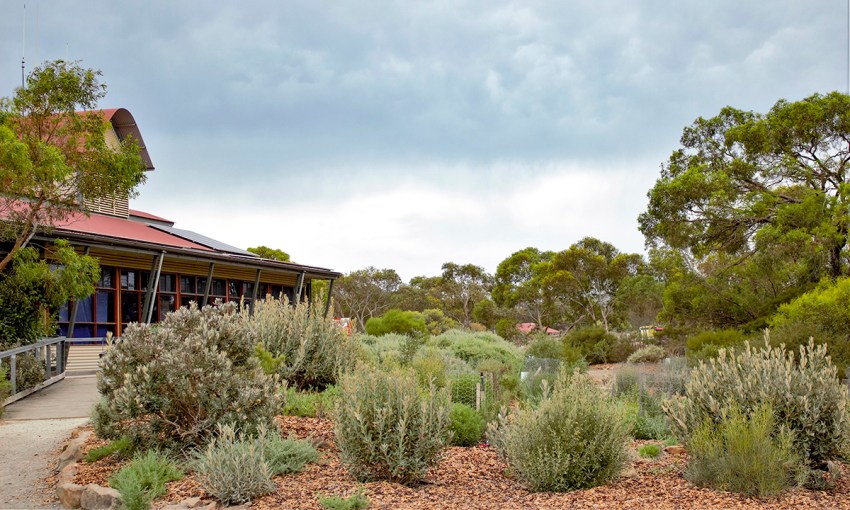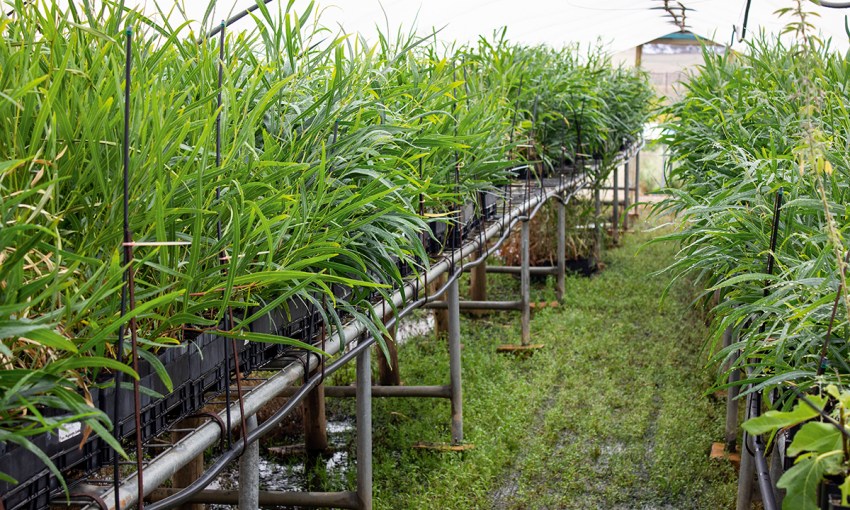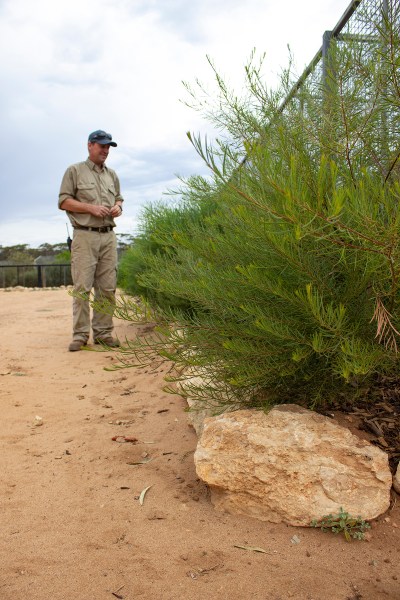Justin Connolly gardens in a place where the residents not only roar at him frequently but also eye him off as a pre-dinner snack.
In the garden: Gardening on the wild side
Gardens come in all shapes and sizes. Across our beautiful state you will find gardens that are permanently green, lush and trimmed to within an inch of their manicured leaves. Some have a Mediterranean influence, some are planted for colour or foliage, and others attract bees and beneficial insects. As locals would know, gardening at Monarto, 70 kilometres from Adelaide, with an annual rainfall of just 340 millimetres and on a deep limestone bed, is not for the faint-hearted. High temperatures in summer (up to 48C), and cold days in winter (down to just 7C) compound the difficulty of gardening in this area.
As Monarto Zoo’s only gardener, Justin Connolly certainly has a job on his hands. Justin tends to the 1500 hectares that comprise Australia’s largest, and South Australia’s only, open range zoo. There aren’t too many gardeners who get the chance pursue their love of plants while also having the opportunity to rub shoulders (figuratively speaking, of course,) with some of the world’s most majestic and endangered animals.

When I think of a gardener and the jobs they might undertake, I think of people maintaining lawns, clipping hedges, weeding garden beds, and pruning and planting with gusto. I think of strong, capable men and women who work in the outdoors whatever the weather; of people who drive vehicles with trailers in tow, filled to the brim with tools of the trade. Justin is all of these things, and more, and that’s because gardening at this zoo entails some pretty “wild” duties in the most unconventional of gardening ways. Part of Justin’s job sees him chop, weigh, portion and individually package meat for the zoo’s many carnivores. Now that’s a job many gardeners would certainly shy away from!
Monarto Zoo was first established in 1983 as a breeding and pasture area to support the work of the Adelaide Zoo. Fast forward 10 years, and Monarto opened its gates to the general public as an open range zoo. If you are looking at environmental conditions, Monarto is as different from the lush greenery and high rainfall of the Adelaide Zoo as you could get. However, the hot and dry conditions haven’t stopped this zoo from becoming a thriving habitat for local flora and fauna, and for endangered animals from around the world.

Justin is responsible for grounds and garden maintenance in visitor areas, animal exhibits and in behind-the-scenes or “off-limit areas”, as they are called at the zoo. Of course, the place where Justin’s work is most visible is the garden at the visitor centre.
In years gone by the area adjacent this centre was largely devoid of vegetation, much of it eaten low by resident kangaroos and by rabbits. Under his watchful eye and with the help of tree guards and fencing, the visitor centre is now surrounded by a stunning garden displaying native bushes (including the endangered silver daisy bush), trees and shrubs, along with an interactive children’s play area and several habitat display gardens. A large number of plants in this area were grown from seed, on-site, at the zoo.
Justin can also be found checking on fencing (no mean feat given the extensive size of the zoo and all the internal enclosures), checking and fixing watering issues, maintaining fire breaks and walking paths, and undertaking weed control.

Tucked away, far from the view of the general public, you will find a hive of activity, sheds full of tools, piles of seed raising mix and row after row of acacia seedlings in poly tunnels. This is the hub of horticultural prowess at the zoo. It’s where seed collected locally is sorted, planted and grown.
With the help of the “Mallee Minders” volunteers, Justin also grows and sources “browse” for the zoo’s many herbivores, including the giraffes, chimps, bison and southern white rhinoceros. Browse is the name given to both native and exotic plant species cut for food, and is of enormous importance to the zoo, with a large amount of time and effort going into growing and maintaining these plants, as well as sourcing browse that can’t be grown in the harsh climate at Monarto.
At any time there may be approximately 6000 seedlings in the propagation tunnel (predominantly Acacia saligna), with another 15,000 mature browse plants growing on zoo grounds and being coppiced for regrowth. While the keepers are tasked with feeding out browse to the animals, growing and maintaining browse plants is a constant job for Justin, the Mallee Minders, and for the staff employed to cut and source exotic browse. Without fresh browse the zoo certainly couldn’t support the dozens of herbivores who call Monarto home.

Justin’s tips for growing plants successfully in an environment such as Monarto’s, and indeed for anyone wanting to garden successfully, is simply: do the job properly the first time. In his case, this means giving each plant the very best chance to survive in the hot, dry climate. Justin ensures all plants grown and planted at the zoo are given appropriate fertiliser tablets, that soil wetters are applied, that the plants are protected from rabbits with tree guards and, most importantly, that their growth is supported by supplementary watering over the first couple of summers.
There is no doubt this is a tough place to garden. The environment is harsh, and the size of the land to care for enormous. However, Justin’s passion, his love for what he does, his appreciation and respect for the land on which the zoo sits and the species that call it home, is easy to see.
Monarto Zoo is open daily (including Christmas Day and Good Friday) monartozoo.com.au
This story first appeared in the Autumn 2019 issue of SALIFE Gardens & Outdoor Living Magazine.



